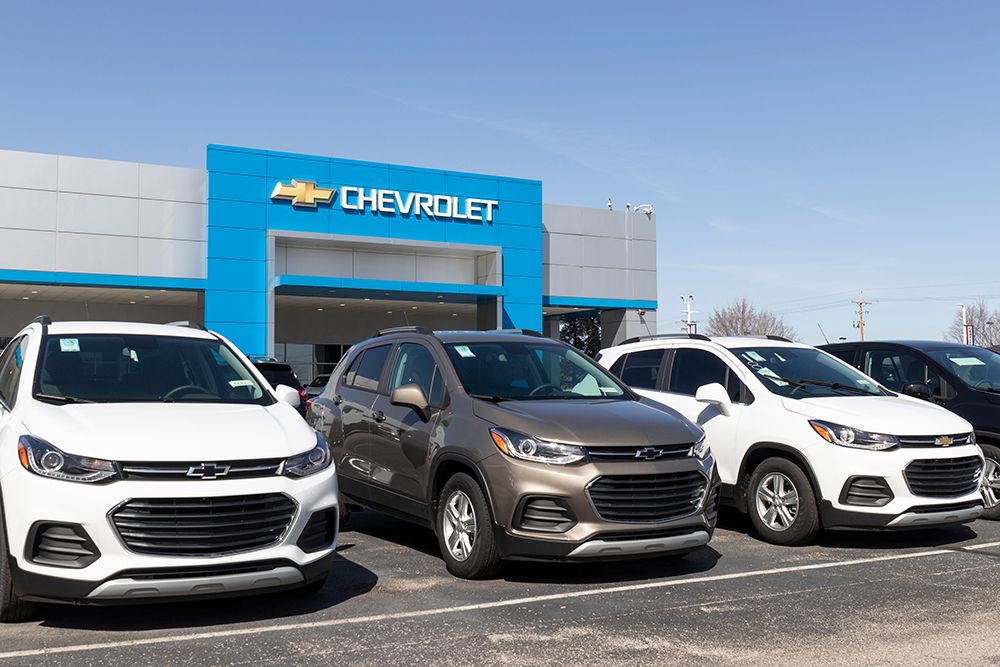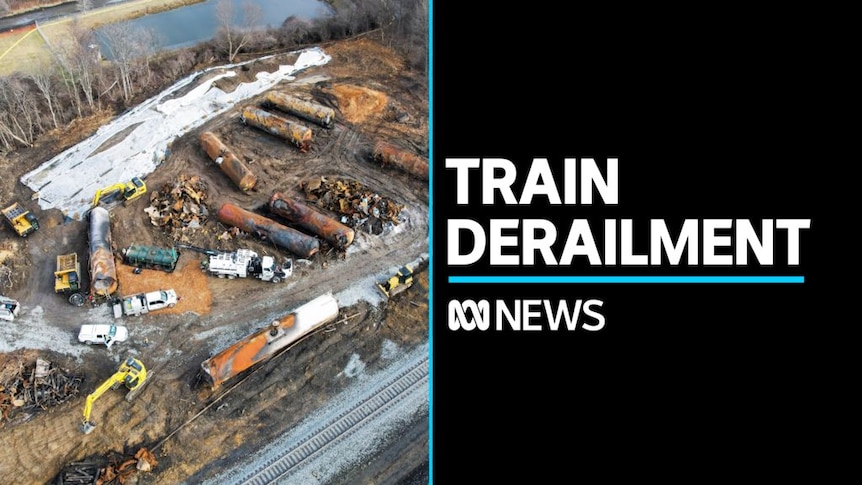EV Mandate Backlash: Car Dealers Push For Alternatives

Table of Contents
Financial Hurdles and Infrastructure Gaps
The transition to an EV-centric market presents significant financial hurdles for car dealerships. These challenges stem from substantial upfront investments and persistent consumer hesitancy.
High Initial Investment Costs
Dealerships require substantial investment to support EV sales. This includes significant upgrades to their infrastructure and operations.
- Cost of installing Level 2 and DC fast chargers: The expense of installing and maintaining charging stations, especially DC fast chargers, can be prohibitive for many dealerships, particularly smaller ones. This is compounded by the need for grid upgrades in some areas to handle the increased electricity demand.
- Training costs for EV-specific maintenance and repair: EVs require specialized knowledge and tools for repair and maintenance, demanding significant investment in technician training programs. The lack of readily available trained technicians further exacerbates this challenge.
- Showroom upgrades to display and highlight EV features: Showrooms need to be updated to showcase EVs effectively, highlighting their unique features and benefits. This requires investment in new displays, marketing materials, and potentially even physical renovations.
- Lack of government subsidies for infrastructure development: The insufficient level of government subsidies for infrastructure development related to EV sales creates a significant burden on dealerships. Many dealers feel that the current support is inadequate to offset their considerable investment costs.
Limited Consumer Demand and Affordability
Despite government incentives, significant barriers hinder widespread EV adoption.
- High upfront cost of EVs compared to gasoline-powered vehicles: The higher purchase price of EVs compared to internal combustion engine (ICE) vehicles remains a major obstacle for many consumers. This price difference is a key factor in the slow uptake of EVs, even with government rebates.
- Concerns about charging infrastructure availability and charging times: Range anxiety and concerns about the availability of public charging stations, as well as charging times, continue to deter potential EV buyers. A lack of convenient and readily available charging infrastructure is a significant deterrent.
- Limited range of some EVs, particularly in rural areas: The limited range of some EVs, particularly in comparison to gasoline vehicles, is a significant concern for consumers in rural areas with less access to charging stations. This range limitation significantly affects consumer confidence.
- Uncertainty regarding long-term battery lifespan and replacement costs: The long-term costs associated with EV battery lifespan and replacement are still relatively unknown and create uncertainty for potential buyers. This lack of information contributes to consumer hesitation.
Supply Chain Challenges and Inventory Management
The current global economic climate further complicates the transition for car dealerships.
Difficulties in Sourcing EVs and Parts
Global supply chain disruptions are severely impacting EV production and availability.
- Delays in EV deliveries to dealerships: Dealerships are experiencing significant delays in receiving EV deliveries from manufacturers due to supply chain bottlenecks. This lack of inventory directly impacts their sales.
- Challenges in securing enough inventory to meet consumer demand: The limited availability of EVs makes it difficult for dealerships to meet the growing – albeit still limited – consumer demand. This shortage leads to lost sales opportunities.
- Increased lead times for EV parts and repairs: The supply chain disruptions also affect the availability of EV parts, leading to increased lead times for repairs. This extends service times and potentially impacts customer satisfaction.
Managing Inventory of Both ICE and EV Vehicles
Dealerships face logistical challenges managing both ICE and EV inventories.
- Need for expanded storage space to accommodate both types of vehicles: Dealerships require more storage space to manage both ICE and EV inventories, adding further financial pressure. This increased space requirement can be costly.
- Increased complexity in inventory management and logistics: Managing two distinct types of vehicles increases the complexity of inventory management, requiring new systems and expertise. This added complexity impacts efficiency.
- Risk of overstocking one type of vehicle while understocking the other: The challenge of predicting future demand for both ICE and EV vehicles increases the risk of overstocking one type of vehicle while simultaneously experiencing a shortage of the other. This creates both financial and operational risks.
Proposed Alternatives and Dealer Solutions
Car dealerships are actively proposing alternatives to mitigate the negative impacts of the EV mandate.
Phased Implementation of EV Mandates
Dealerships advocate for a more gradual transition to EVs.
- Setting realistic targets for EV sales based on market conditions: A phased approach allows for setting more realistic sales targets that align with the evolving market conditions and consumer demand. This avoids setting unrealistic targets that burden dealers.
- Providing adequate support and resources to dealerships during the transition: Government support is crucial for a smooth transition. Dealerships require financial assistance and resources to effectively adapt to the new environment.
- Considering regional differences in EV adoption rates: EV adoption rates vary significantly by region. A phased approach allows policymakers to tailor the transition to reflect regional differences in market conditions and infrastructure.
Government Support for Infrastructure and Training
Dealerships urge increased government funding.
- Incentives for installing EV charging stations: Government incentives can significantly reduce the financial burden on dealerships for installing charging stations. Subsidies are crucial to encouraging the development of charging infrastructure.
- Funding for EV technician training programs: Investing in training programs ensures a skilled workforce capable of servicing EVs. This is crucial for maintaining consumer confidence and addressing potential service challenges.
- Government grants and loans to support dealership upgrades: Government grants and loans can assist dealerships in financing the upgrades necessary to support EV sales. This financial support reduces the financial risks associated with the transition.
Focus on Hybrid Vehicles as a Bridge Technology
Hybrid vehicles can facilitate a smoother transition.
- Hybrids offer a balance between fuel efficiency and affordability: Hybrid vehicles provide a balance between fuel efficiency and affordability, making them a more accessible option for consumers compared to pure EVs. This reduces the immediate burden on consumers.
- Hybrids provide a stepping stone for consumers transitioning to EVs: Hybrids act as a stepping stone, allowing consumers to familiarize themselves with electric technology before fully committing to an EV. This gradual transition is more likely to gain widespread acceptance.
- Hybrid technology helps improve overall emissions reductions: Promoting hybrid vehicles leads to an immediate reduction in greenhouse gas emissions, even before a complete shift to EVs. This contributes to immediate environmental benefits.
Conclusion
The EV mandate backlash highlights the complex challenges facing car dealerships in adapting to the rapid shift towards electric vehicles. Addressing financial hurdles, supply chain issues, and consumer concerns is crucial for a successful transition. Dealers are proposing practical alternatives, including phased implementation, increased government support, and a focus on hybrid vehicles as a bridge technology. A collaborative approach involving manufacturers, policymakers, and dealerships is essential to navigate the EV mandate backlash effectively and ensure a smooth transition to a sustainable automotive future. Let's work together to find solutions that address the concerns surrounding the EV mandate and accelerate the adoption of electric vehicles responsibly.

Featured Posts
-
 Hillsborough Principal Of The Year De Soto Elementarys Leader Recognized
May 19, 2025
Hillsborough Principal Of The Year De Soto Elementarys Leader Recognized
May 19, 2025 -
 Investigation Into Persistent Toxic Chemicals Following Ohio Train Derailment
May 19, 2025
Investigation Into Persistent Toxic Chemicals Following Ohio Train Derailment
May 19, 2025 -
 Primarias 2025 El Cne Recibe 18 Recursos De Nulidad
May 19, 2025
Primarias 2025 El Cne Recibe 18 Recursos De Nulidad
May 19, 2025 -
 April 15th Nyt Connections Puzzle 674 Complete Hints And Answers
May 19, 2025
April 15th Nyt Connections Puzzle 674 Complete Hints And Answers
May 19, 2025 -
 Austria Wins Eurovision 2025 Jjs Wasted Love Conquers Europe
May 19, 2025
Austria Wins Eurovision 2025 Jjs Wasted Love Conquers Europe
May 19, 2025
